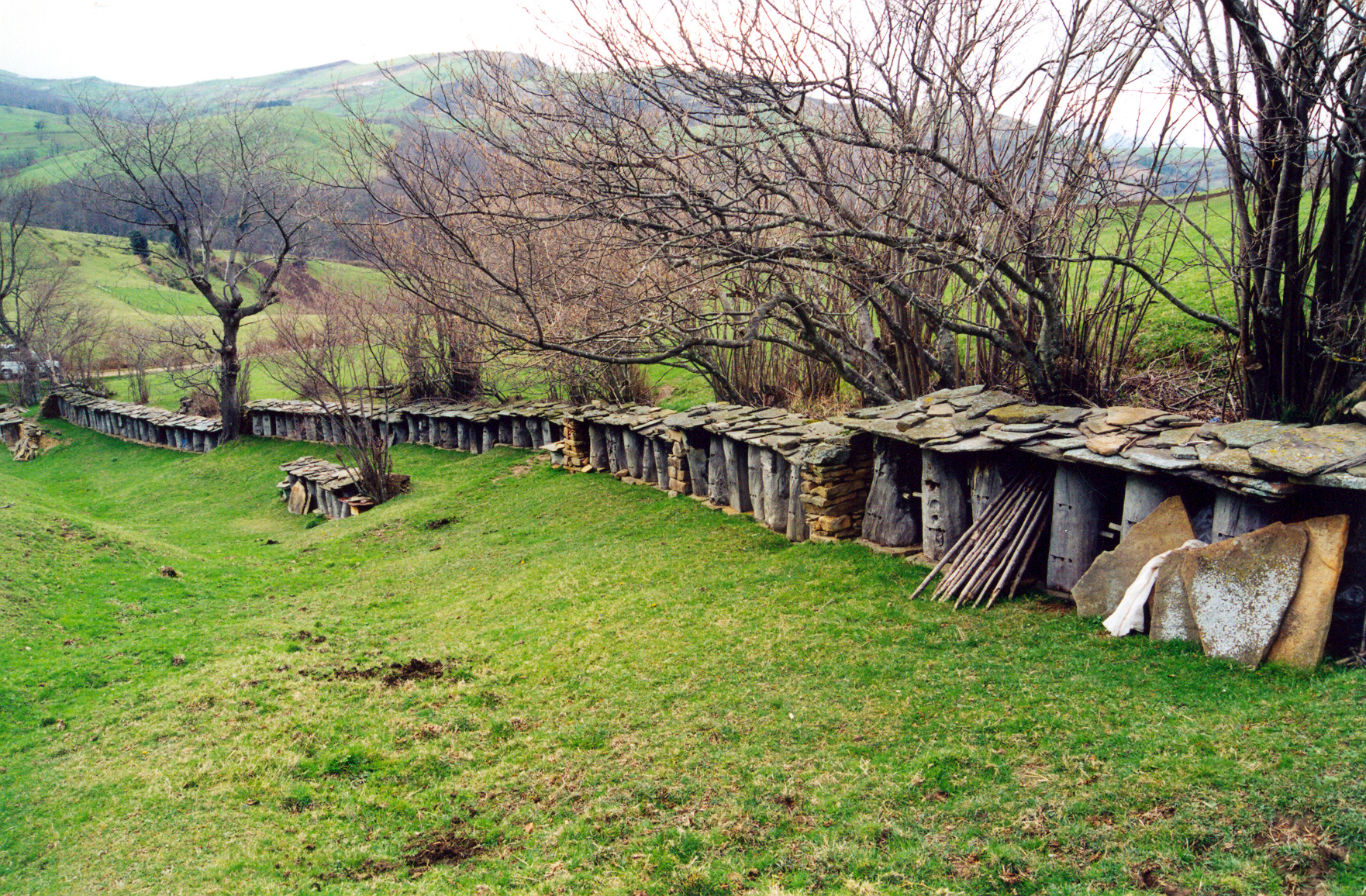Basque ethnography at a glance
The log hive, known locally as cepo, has since time immemorial and until barely a few decades ago been the ideal place to site a bee colony for beekeeping in Valley of Carranza apiaries. Fixed in a vertical position, as tradition dictates, this type of hive consisted of a dead or hollowed-out tree trunk on whose walls the bees were to build their honeycombs or tástanas. Sometimes the hive was built with timbers to solve shortage of tree logs.
The hive was fashioned from an old tree trunk, its heartwood rotten, cut with a whipsaw to a length of around 60 and 80 cm. The log was hollowed inch by inch using a gouge (with a sharp half-round cutting edge) to cut the wood out, leaving 4 to 6 cm of wall thickness. Such a gouge is known by the names madreca (La Calera del Prado) or mondacepos (Bernales and Herboso).
Occasionally during its construction a number of holes were drilled through with a wide boring bar working on the healthier wood, for it exhibited higher resistance to gouging. Finally the log was debarked with an axe in order to prevent the spread of bugs between its cavity and the outer bark.
Other materials employed for building the hive constituted likewise an irreplaceable part of it.
Two sticks were driven through the trunk at medium height and right angles, one slightly above the other, where the comb panels partly seated, and standing out to both sides of the trunk, the bottom pole served as a handle for handling the hive. The so-called cabillas (Bernales, Herboso and San Ciprián), gabillas (La Calera del Prado) or cruz (Aldeacueva) were typically of hazel, chestnut or oak wood.
Several small openings known as aviaderos (La Calera del Prado and Pando), boqueras (Soscaño) or piqueras (Lanzas Agudas) were bored above and below the crossed sticks on the front side of the hive for the bees to get in and out.
The cavity was fitted with 2 to 4 cm thick top boards of the same wood the hive was made of. In some of the hives the cover, named cabeza (Bernales), tapa (Aldeacueva) or tapadera (La Calera del Prado), fitted the perimeter of the hollowed-out log; in others it protruded over the edge.
After completion, the hive was installed in the apiary, sitting the log vertically on a flat stone named asiento (La Calera del Prado), losa (Aldeacueva, Herboso and Lanzas Agudas) or solera (Bernales). The stone provided a solid base and kept soil moisture away from the hive. Care would be taken to ensure the beehive remained stable on the stand and no room was left for small animals that might endanger the survival of the colony to get in.
As from the mid-1980s, and coinciding with the onset of the illness caused by the varroa mite (a bloodsucking parasite that attacks young and adult honeybees) in apiaries, the transfer of the swarm to modern hives with moveable panels increased, leading to avoidance of the use of traditional beehives.
Miguel Sabino Díaz – Etniker Bizkaia – Etniker Euskalerria Groups
Translated by Jaione Bilbao – Language Department – Labayru Fundazioa
Reference for further information: Livestock Farming and Shepherding, part of the Ethnographic Atlas of the Basque Country collection.



